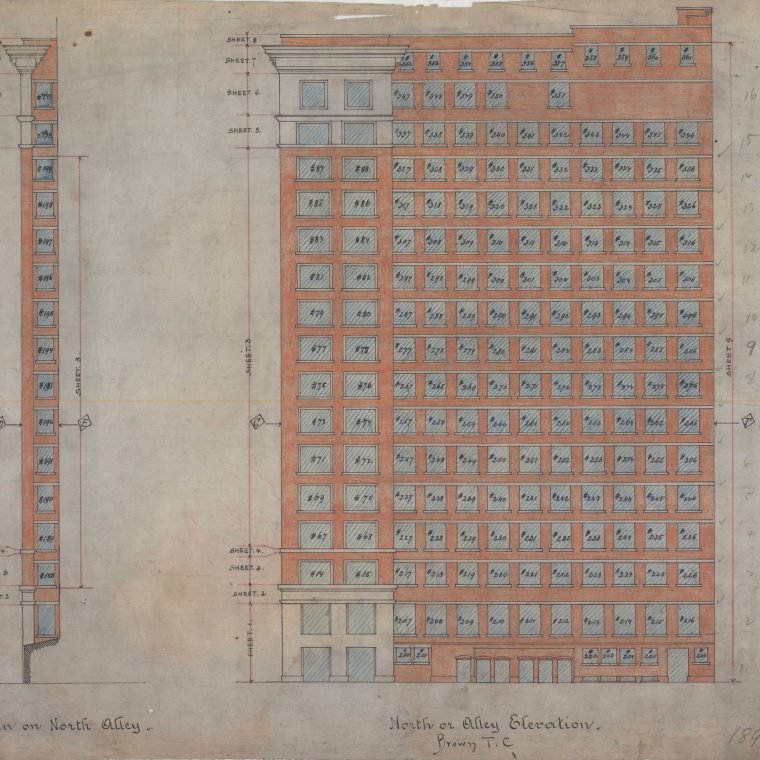Gift of Edward J. Mertes
Donated in 1982
At the beginning of the 20th century, architectural terra cotta was firmly established as America’s premier material for detailing commercial structures, especially the new, steel-framed skyscrapers then rising in Chicago and New York City. After the devastating Chicago fire of 1871, the fireproof qualities of this ancient, baked-clay form propelled its acceptance as a less expensive and lightweight alternative stone. Terra cotta’s popularity peaked in the 1920s, before being eclipsed by modernist curtain walls of glass, exposed steel, and concrete.
 One of the nation’s pioneering manufacturers was the Northwestern Terra Cotta Company (1877–1956), headquartered in Chicago. To direct both production and installation, the studio’s draftsmen transformed architectural blueprints into comprehensive “shop drawings” that identified exactly where and how each puzzle-like piece would be secured to its supporting structure. Favored by such international architectural luminaries as Louis H. Sullivan, Daniel Burnham, and Albert Kahn, the company ultimately contributed to thousands of buildings across the country in a wide array of styles.
One of the nation’s pioneering manufacturers was the Northwestern Terra Cotta Company (1877–1956), headquartered in Chicago. To direct both production and installation, the studio’s draftsmen transformed architectural blueprints into comprehensive “shop drawings” that identified exactly where and how each puzzle-like piece would be secured to its supporting structure. Favored by such international architectural luminaries as Louis H. Sullivan, Daniel Burnham, and Albert Kahn, the company ultimately contributed to thousands of buildings across the country in a wide array of styles.
In the 1890s the Northwestern Terra Cotta Company successfully recruited European craftsmen to join the firm as sculptors in its modeling shop. These highly skilled artists could earn three or four times as much as a less skilled laborer at the same factory.
By 1920 the firm’s Clybourn Avenue plant covered 24 acres and was the largest in the world. In addition to operating a second facility in Chicago Heights, the company subsequently acquired plants in St. Louis and Denver.
Northwestern Terra Cotta targeted its client base by advertising in trade journals such as American Architect. The company wasted no time promoting its involvement in the construction of the distinctive Wrigley Building—the first skyscraper completely clad “from sidewalk to searchlight” in terra cotta. Not only was the gleaming white-enamel office tower Chicago’s tallest structure at that time, it was the first of a series that inaugurated new development north of the Chicago River.
In 1982, the Museum received an unprecedented gift of 50,000 drawings created by the firm from 1900–54. The collection remains one of the largest and most valuable of its kind.
The Northwestern Terra Cotta collection is in storage and not on view. Please check current exhibitions for a list of what is publicly accessible.
